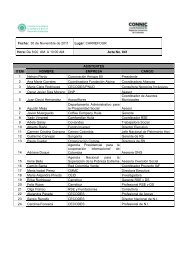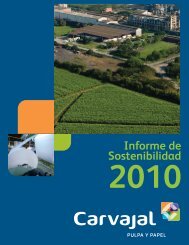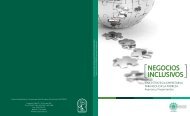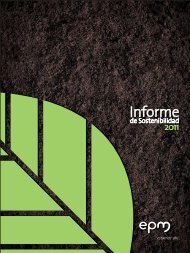Setting new standards - Friends Life
Setting new standards - Friends Life
Setting new standards - Friends Life
Create successful ePaper yourself
Turn your PDF publications into a flip-book with our unique Google optimized e-Paper software.
PARENT COMPANY ACCOUNTS<br />
ABBREVIATIONS AND DEFINITIONS<br />
Notes to the consolidated accounts continued<br />
29. Capital statement continued<br />
(e) Movement in available capital<br />
At 31 December 2006 total available <strong>Life</strong> & Pensions capital resources had increased by £7m to £2,474m, as shown below.<br />
Overseas <strong>Life</strong> & Total<br />
UK with- UK with- UK non- <strong>Life</strong> & Pensions <strong>Life</strong> &<br />
profits profits participating Pensions shareholders’ Pensions<br />
(FPLP) (FPLA) funds funds funds business<br />
£m £m £m £m £m £m<br />
At 1 January 2006 236 118 814 56 1,243 2,467<br />
New business strain - - (297) (35) - (332)<br />
Surplus in year* (4) 25 155 49 73 298<br />
Assumption changes:<br />
- PS 06/14 - - 123 - - 123<br />
- Morbidity basis - - 123 - - 123<br />
- Other (12) (1) 6 (1) - (8)<br />
Transfers - - (200) (25) 225 -<br />
Dividend and STICS interest - - - - (197) (197)<br />
At 31 December 2006 220 142 724 44 1,344 2,474<br />
* All tax items are included within Surplus in year.<br />
30. Risk management objectives and policies for mitigating risks<br />
The Group’s risk management policies and the processes for identifying risks across the Group, including strategic and operational risks, are<br />
described in the Corporate governance report. These processes include identification and control of financial, insurance, and other risks, the<br />
key components of which are:<br />
• Market risk – the risk of loss arising from changes in the values of, or income from, assets or in interest or exchange rates. A risk of loss<br />
also arises from changes in the volatility of asset prices, interest rates or exchange rates.<br />
• Insurance risk – the risk of loss due to the inherent uncertainties as to the occurrence, amounts and timing of insurance liabilities.<br />
• Credit risk – the risk of loss due to the default of a company, individual or country, or a change in investors’ risk appetite.<br />
• Liquidity risk – the risk of loss because a firm, although solvent, either does not have sufficient financial resources available to it in order to<br />
meet its obligations as they fall due, or can secure them only at excessive cost.<br />
For each of the above risks, the Group determines its risk appetite and sets its investment and underwriting policies accordingly. The Group<br />
companies set their respective qualitative risk appetites in a range from no appetite for the risk, through to actively pursuing those risks<br />
where they have competitive advantage. Risk policy is documented in each of the above areas, including the actions to mitigate those risks.<br />
A summary of how each risk is mitigated is provided below with, where appropriate, quantitative information on the exposure to that risk.<br />
<strong>Friends</strong> Provident Annual Report & Accounts 2006 143

















